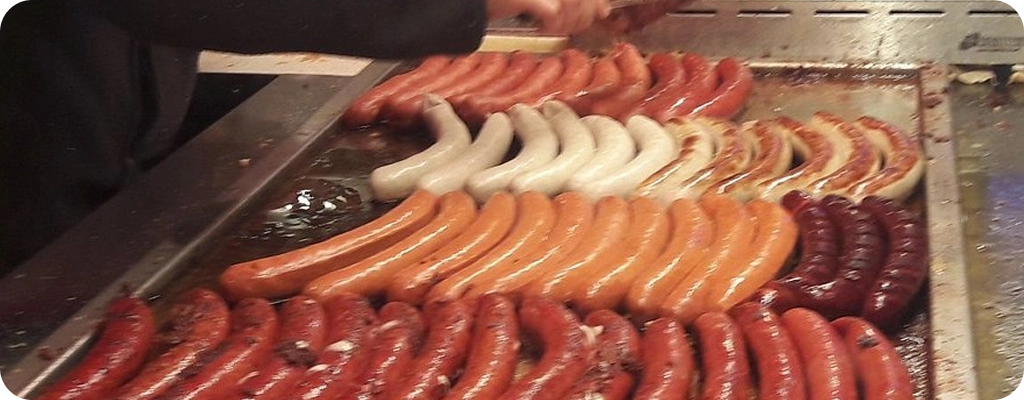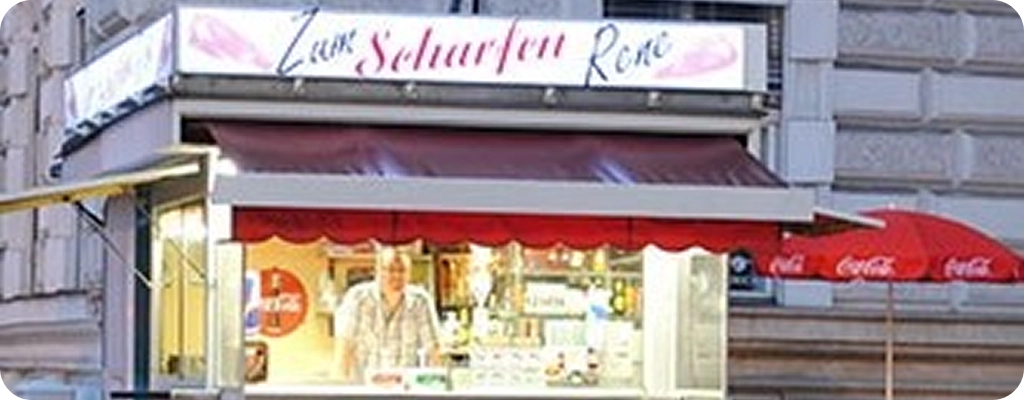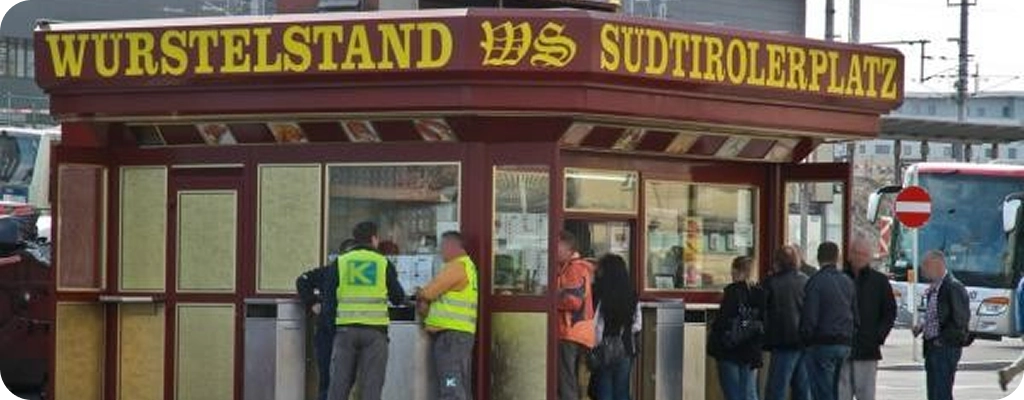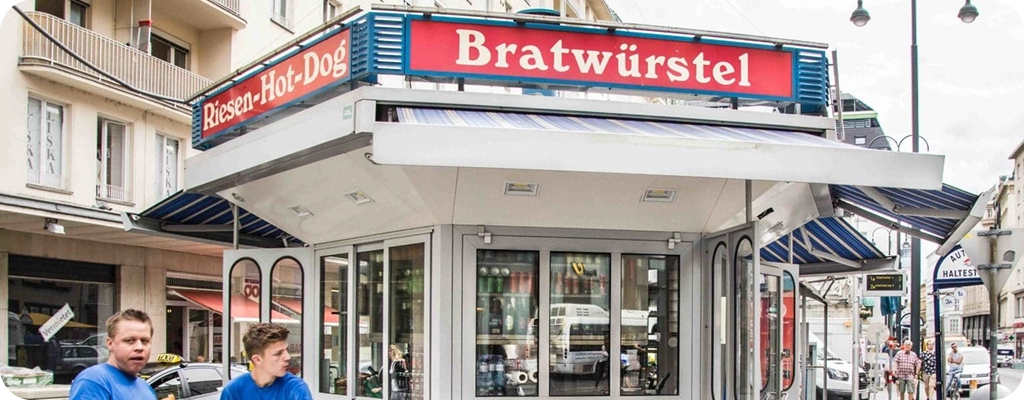More Than Just Sausage – The History and Sociological Significance of the Viennese Würstelstand
The Viennese Würstelstand is far more than just a quick snack. It is an institution, a stage for everyday life, a place of encounter – open to all social classes, at any time of day or night. Its origins date back to the late 19th century, when the city of Vienna permitted the sale of sausages from mobile carts. The intention was to provide war-disabled men with a means of income. After World War I, these mobile vendors evolved into the first fixed Würstelstände. Although they were officially required to remain mobile, in practice, they stayed in the same spots for decades. These metal kiosks with their unmistakable patina still shape the image of Vienna today – often found at busy intersections, subway entrances, or in front of theaters.
What ends up on the plate at the Würstelstand is a culinary reflection of the city: Frankfurters, Debreziners, Burenwurst, Waldviertler sausages, hot dogs, meatloaf – and of course, the legendary Käsekrainer, affectionately known as the “Eitrige.” It comes with sharp or sweet mustard, horseradish, pickles, and a crusty roll. For many, a beer – often a “16er Blech” (a can of Ottakringer beer) – is the perfect companion, traditionally wrapped in a paper napkin. But what truly defines the Würstelstand is not just the food, but the unique social setting surrounding it.
From a sociological perspective, the Würstelstand is a place of permeability. Here, people from vastly different walks of life come together: the construction worker and the opera-goer, the taxi driver and the tourist, the night owl and the philosopher. The Würstelstand becomes a stage for Vienna in all its contradictions – anonymous yet familiar, down-to-earth, direct, sometimes grumpy, but always authentic. It is a space where the famous Viennese “Schmäh” (– a blend of irony, wit, and melancholy –) thrives between mustard and beer. Social differences blur here, at least temporarily – because, as the locals say, “At the Würstelstand, everyone is equal.”

In recent years, the Würstelstand has experienced something of a renaissance. Alongside traditional stands, modern versions have emerged, offering organic sausages, vegan options, or sleek design concepts. Yet the original remains unchanged – a little weathered, perhaps, but full of character. For many Viennese, the phrase “I go to the Schmiedl, not the Schmied” isn’t just an old saying, it’s a culinary principle.
That the Würstelstand is more than just a food stop was officially recognized in 2024, when it was added to UNESCO’s list of Intangible Cultural Heritage. This distinction honors the Würstelstand as a living piece of everyday culture, a low-threshold social meeting point – and as proof that it’s often the little things that give a city its soul.
To understand the Würstelstand is to understand Vienna. It’s a place of nourishment, of connection, of humor, and of that unmistakable Viennese attitude toward life – contradictory, straightforward, warm. Because sometimes, all it takes is a Käsekrainer with spicy mustard, and suddenly, the world feels just a little bit friendlier.
Official Recognition: Cultural Heritage with Mustard
That the Würstelstand is more than just a snack stop was officially acknowledged in 2024:
Since that year, the Viennese Würstelstand has been officially recognized as part of UNESCO’s Intangible Cultural Heritage.
A strong signal for the value of lived everyday culture, for accessible social gathering spaces – and for honoring the small things that together shape the soul of a city.





